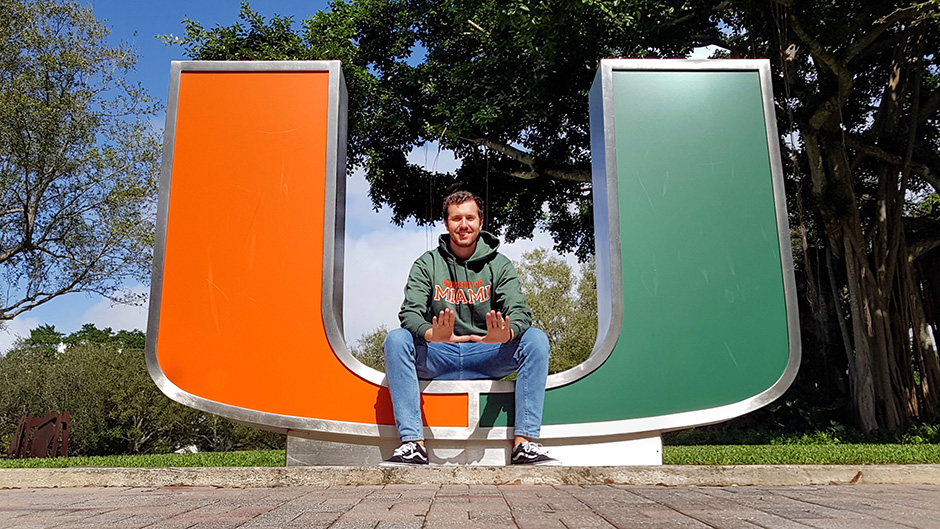Luca Galli, a civil and architectural engineering (CAE) Ph.D. student in the College of Engineering working on a large-scale resilient seawall project, was honored with the 2022-2023 Structural Engineering Majors Scholarship from the Florida Structural Engineers Association (FSEA). He received the award at a recent meeting of FSEA’s South Florida Chapter.
“I am honored and humbled to have been selected as the recipient of the prestigious scholarship,” said Galli, who also thanked Prannoy Suraneni, Ph.D., assistant professor of CAE, for his support. “My grandfather was a civil engineer, and I admired his work on structural projects.”
Galli’s study on concrete seawall structures is part of a grant to the University of Miami from the U.S. Department of Commerce’s National Institute of Standards and Technology (NIST) and the National Science Foundation (NSF) to develop resilient infrastructure that will improve the ability of communities to protect against extreme weather events and the impact of climate change.
With this grant, the College of Engineering is collaborating with the Rosenstiel School of Marine, Atmospheric, and Earth Science to develop sustainable and resilient infrastructure that can better resist extreme weather events. The engineering aspects of the project include examining the design of seawalls, and ultimately deploying some of the developed materials and designs in South Florida.
“To develop more resilient seawalls, the materials need to be fundamentally modified,” said Galli. That includes using ultra-high performance concrete to replace conventional concrete, and glass fiber reinforced polymer (GFRP) to replace steel reinforcement. “GFRP has several advantages over steel rebar, but the most important advantage for its use in seawalls is that GFRP does not corrode in the presence of chloride,” Galli said. “That eliminates one of the major reasons that seawalls are damaged over time.”
Galli added that these high-performance, corrosion-free materials can be adapted to different locations, including the Miami-Dade County coastline. “Right now, the cost of deploying concrete seawalls is high and the durability is less than ideal,” he said. “Our goal is to improve the strength and overall performance, while reducing the cost and enhancing sustainability.”
Galli said the next steps in the project include testing different concrete mixtures, and evaluating the results. “Then we will go into the field with pilot projects,” he said. “That will, over the long-term, help us determine advantageous approaches to improving seawalls as a primary defense against storm surges and other dangerous wind and wave conditions.”

